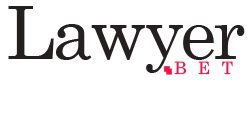Back to Basics: The 6 Core Principles of New York Estate Planning
Estate planning can often seem like a labyrinth of complex legal documents and confusing terminology. Faced with terms like “probate,” “trusts,” and “fiduciary duties,” it’s easy to feel overwhelmed and put off this critical task for another day. However, at its heart, estate planning is about answering a few simple but profound questions: Who do you want to receive your assets? Who do you trust to be in charge? And how can you best protect your loved ones and your life’s work? All the complex documents are simply tools designed to answer these questions.
As a New York estate planning attorney with more than three decades of experience, I’ve learned that the most successful plans are built on a solid understanding of the fundamentals. Before diving into the details of specific legal instruments, it’s essential to grasp the core principles that guide the entire process. To that end, the legal team at Morgan Legal Group has distilled the vast field of estate planning into six core fundamentals. Mastering these concepts will empower you to engage in the planning process with clarity and confidence, ensuring the plan you create is a true reflection of your wishes.
Fundamental 1: Planning for Incapacity is as Important as Planning for Death
Many people mistakenly believe that estate planning is only about what happens after they die. In reality, a robust plan provides equal, if not greater, protection for you while you are still alive. Statistically, you are far more likely to become incapacitated (unable to manage your own affairs) for a period of time than you are to die unexpectedly. An illness, a sudden injury, or cognitive decline can leave you unable to pay your bills, manage your investments, or make medical decisions.
The Consequences of Not Planning for Incapacity
If you become incapacitated without a plan, your family has no automatic legal authority to act on your behalf. They cannot simply walk into your bank and access your accounts to pay your mortgage. To gain this authority, they would have to petition the New York court in a costly, public, and often lengthy legal proceeding known as a guardianship or conservatorship. A judge would decide who should manage your affairs, and that person would be subject to ongoing court supervision. This process is a significant burden on your loved ones during an already stressful time.
The Tools for Incapacity Planning
A comprehensive estate plan avoids this scenario with three key documents:
- Durable Power of Attorney: This document allows you to appoint a trusted “agent” to make financial and legal decisions for you if you are unable to do so.
- Health Care Proxy: This allows you to appoint an agent to make medical decisions for you when you cannot.
- Revocable Living Trust: This allows your chosen successor trustee to seamlessly step in and manage the assets held within the trust for your benefit, without any court intervention.
This first fundamental is about protecting yourself. The rest are about protecting your legacy.
Fundamental 2: Distinguishing Between Probate and Non-Probate Assets
Understanding what your will does—and does not—control is a critical concept. Not all of your assets will pass to your heirs through your will and the court process of probate. A significant portion of your wealth may pass directly to its new owners by “operation of law.”
What Are Probate Assets?
Probate assets are any assets that are titled in your name alone and do not have a designated beneficiary. These are the only assets that are governed by the terms of your will. Examples include:
- A house or car titled solely in your name.
- A bank or brokerage account in your sole name without a “Payable on Death” (POD) or “Transfer on Death” (TOD) designation.
- Personal property like jewelry, art, and furniture.
What Are Non-Probate Assets?
Non-probate assets bypass your will and the probate process entirely. They are transferred automatically based on how they are titled or who is named as a beneficiary. Common examples include:
- Assets with Beneficiary Designations: Life insurance policies and retirement accounts (401(k)s, IRAs) are paid directly to the beneficiaries you named on the account forms.
- Jointly Owned Property: Assets owned as “Joint Tenants with Rights of Survivorship” automatically pass to the surviving joint owner. For married couples in New York, a primary residence is often held as “Tenants by the Entirety,” which has a similar effect.
- Assets in a Trust: Any property you have legally transferred into a trust is controlled by the trust document, not your will.
A huge part of effective wills and trusts planning is understanding this distinction and ensuring that the titling of all your assets aligns with your overall plan.
Fundamental 3: The Will as the Bedrock, The Trust as the Structure
While we just discussed that a will doesn’t control everything, it remains the absolute bedrock of every estate plan. A Revocable Living Trust is a powerful tool for building upon that foundation to achieve more advanced goals.
The Irreplaceable Role of the Will
Every adult needs a will, even if they have a trust. A will is the only document that can:
- Nominate a Guardian for Minor Children: This is its most critical and unique function for parents.
- Name an Executor: You choose the person you trust to be in charge of settling your estate.
- Act as a “Pour-Over” Safety Net: A special “pour-over will” works with a trust to catch any assets you forgot to transfer into the trust and ensures they end up where you intended.
The Strategic Power of the Trust
A trust is a private contract that holds and manages your assets. By transferring your property into a trust, you can:
- Avoid Probate: This is the primary benefit, saving your family time, money, and the hassle of a public court proceeding.
- Provide Enhanced Incapacity Planning:
- Control Distributions: You can protect an inheritance from a beneficiary’s creditors, divorce, or poor financial decisions by holding it in trust for their lifetime.
The choice of whether to use a trust-based plan or a will-based plan depends on your specific goals, a key topic to discuss when you schedule an appointment with a planner.
Fundamental 4: Fiduciary Selection is Paramount
Your estate plan is not self-executing. It relies on people you appoint to carry out your wishes. These individuals are known as “fiduciaries,” and they have a legal duty to act in your best interest. The success of your entire plan hinges on choosing the right people for these roles.
The Key Fiduciary Roles
- Executor: The person named in your will to manage your probate estate.
- Trustee: The person or institution that manages the assets held in a trust.
- Agent under a Power of Attorney: Your financial decision-maker during incapacity.
- Agent under a Health Care Proxy: Your medical decision-maker during incapacity.
- Guardian: The person who would raise your minor children.
What to Look for in a Fiduciary
This isn’t a popularity contest. You need someone with:
- Unquestionable Integrity: This is the single most important trait.
- Organizational Skills and Diligence: These roles involve significant paperwork and responsibility.
- Impartiality: The ability to be fair to all beneficiaries, which can be difficult for a family member. In some cases of complex family law dynamics, a professional fiduciary (like a bank or trust company) may be a better choice.
- Willingness to Serve: Always ask the person before you nominate them.
You must also name at least one successor for each role. What if your first choice is unable or unwilling to serve when the time comes? Without a backup, a court will have to get involved. Expert guidance from an attorney like Russel Morgan, Esq., can be invaluable in this selection process.
Fundamental 5: Integrating Tax and Long-Term Care Planning
A basic estate plan directs who gets your property. A sophisticated estate plan looks at the bigger picture: how to preserve the value of that property from being eroded by taxes and long-term care costs.
New York Estate Tax Considerations
While the federal estate tax exemption is very high, New York has its own estate tax with a much lower threshold ($6.94 million in 2024). For residents of high-cost areas like New York City with valuable real estate, it’s easier to hit this threshold than many people think. Proper planning can utilize strategies like irrevocable trusts or strategic gifting to minimize or eliminate this tax.
The Looming Threat of Long-Term Care Costs
This is the greatest financial threat for many middle-class seniors. The cost of a nursing home in New York can exceed $15,000 per month, quickly depleting a lifetime of savings. Elder law is a specialized field of estate planning that focuses on protecting your assets while helping you qualify for Medicaid to cover these costs. This often involves using an Irrevocable “Medicaid” Trust. However, this planning must be done at least five years in advance due to the Medicaid look-back period. Ignoring this fundamental can be a catastrophic financial mistake and can create situations ripe for elder abuse as funds dwindle.
Fundamental 6: A Plan is a Living Document, Not a Static Monument
The final, and perhaps most overlooked, fundamental is that an estate plan is not a “set it and forget it” affair. Your life, your family, the law, and your assets will all change over time. Your estate plan must be able to evolve with you.
When Should You Review Your Plan?
You should pull your documents out of the drawer and review them with your attorney every 3-5 years. A review is absolutely mandatory after any of these major life events:
- Marriage or divorce.
- Birth or adoption of a child or grandchild.
- Death of a named beneficiary or fiduciary.
- A significant change in financial circumstances (inheritance, sale of a business).
- A move to another state.
- Changes in the law (such as new tax legislation).
An outdated plan can be as dangerous as no plan at all. It can lead to unintended beneficiaries, unnecessary taxes, and results that are completely contrary to your current wishes.
Building on a Solid Foundation
These six fundamentals are the pillars of a strong and effective estate plan. By understanding the importance of planning for incapacity, the nature of your assets, the roles of wills and trusts, the critical choice of fiduciaries, the need for advanced planning, and the necessity of regular reviews, you are well-equipped to protect your legacy. These principles are universal, whether you are in the heart of the city or a quieter part of the state.
At Morgan Legal Group, we believe our first job is to educate our clients. We build every plan on this solid foundation of understanding, ensuring that you are a confident and informed participant in the process. We don’t just draft documents; we provide lifelong counsel to help you navigate your changing needs. For more information from a trusted third party, you can consult resources like the FINRA Investor Education Foundation.
If you are ready to build your plan on a solid foundation, we are here to help. Contact Morgan Legal Group today to start a conversation about your future and the future of your loved ones. Let us help you translate these fundamentals into a customized plan that provides true peace of mind. Find out more about our client-first approach on Google.
The post The 6 Fundamentals of NY Estate Planning appeared first on Morgan Legal Group PC.



